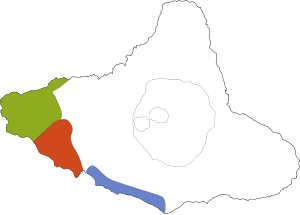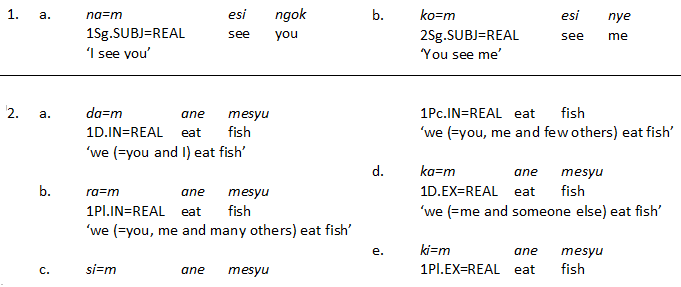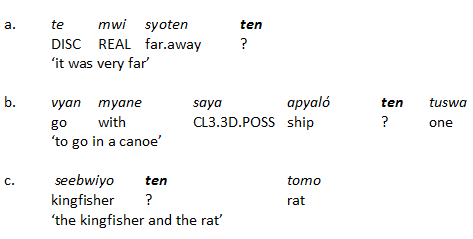Daakaka language
Spoken in
- Malayo -Polynesian oceanic North-Central Vanuatu Dakaka
Bpa
Dakaka or Daakaka, also known as South Ambrym or Baiap, is an oceanic language (Vanuatu) is spoken by about a thousand speakers in the southwest of the island of Ambrym. While most children of the area to learn the language as a first language yet, but the current socio - economic and medial changes and the dominance of the official languages Bislama, English and French in schools and in official contexts pose a serious threat to small linguistic fields;
- 2.1 noun
- 2.2 verbs 2.2.1 transitivity
- 2.2.2 Pluraktionalität
Phonology
Consonants
The system consonantal phonemes is quite typical for the region. Voiced stops are pränasaliert.
Vowels
There are seven phonemic distinctive vocal qualities; this comes the distinction between long and short vowels, as well as a marginal phonemic, short schwa. The distinction between medium and semi-open vowels plays only after alveolar consonants a role, such as in the minimal pair tee [ tɛ ː ] " ax " and tea [te ː ] "see".
Word classes
The four main word classes are nouns, verbs, adjectives and adverbs. Only nouns can be in argument positions. Only verbs and some adjectives are used as predicates without a copula. Only adjectives can directly as attributes of a noun to modify.
Noun
Within the class of nouns can be divided into three subgroups: the largest subgroup is formed by common noun like em 'house' or myaop " volcano ". In contrast to the other two classes, these nouns do not need to specify a Possessor - they can neither flexed nor can follow them another noun phrase immediately. Inflected noun, however, give their possessor always by a person - number suffix to:
Transitive or relational nouns also do not give a mandatory Possessor of, but by inflectional ending, but by a subsequent noun. Well-known, definite, non-human Possessoren be indicated by the suffix- tye or allomorph sye.
" The shell of the Tuwunuss "
" His / her ( non- human) shell "
Verbs
Within the class of verbs, there are different sub-groups which either differ in their transitivity in terms of, or in relation to the number of its internal argument ( the subject of an intransitive verb or the object of a transitive verb ).
Transitivity
There are three Transitivitätsstufen: verbs can be intransitive, transitive or semitransitiv. " Take a walk, go be " Intransitive verbs like oko never take an object. Semitransitive verbs can optionally take an indefinite object, whereas transitive verbs always have a definite object ( regardless of whether it is explicitly specified by a noun phrase ):
" Eat "
" Eat it "
" They eat fish "
" They eat the fish "
Pluraktionalität
While most verbs behave neutrally to the number of their arguments, some verbs can only take arguments in the singular or only in the plural. So mean all three verbs mur, tesi and MEDAP each "fall", but only in MEDAP may be the subject both in the singular and in the plural. In contrast, the subject of mur always to a single speaker, the subject of tesi refers in turn always refers to a plurality of speakers ( which are provided with stellar examples, in red cells, are ungrammatical ):
" A coconut fell down "
Intended: " a coconut fell down "
" A coconut fell down "
Intended: " many coconuts fell down "
" Many coconuts fell down "
" Many coconuts fell down "









